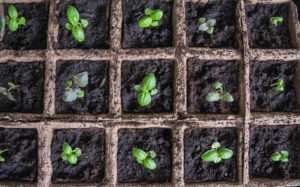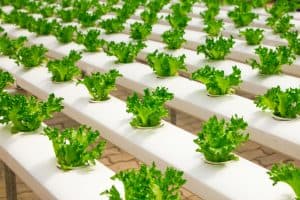How To Pick the Best Water Chiller For Hydroponics
In this article, we’ll facilitate your pick of the most effective water chiller for hydroponics, whether it’s a water chiller for a DWC system or the other kind of system that you just need. We’ll tell you all about water chillers, and why it’s important to stay your nutrient solution cool. We’ll also provide information about the most effective water chillers for hydroponics on the market, so you’ll build an awesome hydroponic garden.
Plant roots have evolved and adapted themselves to the cool temperatures of soil substrates. Therefore, the roots of plants in hydroponics should be similarly cool. this can be done by regulating the temperature of the water-based nutrient solution that’s delivered to the foundation zone.
But maintaining the proper temperatures will be challenging for hydroponic systems that include lights, pumps, and other equipment that will defer heat, raising the ambient heat of a to grow room, which is able to increase the water temperature of the reservoir – especially in problem culture (DWC) systems. To deal with this problem, a water chiller for hydroponics will be an excellent solution.
What Is A Hydroponic Reservoir Water Chiller?
Aquarium water chillers are accustomed stabilize water temperatures and helping provide an optimal environment for the fish, and hydroponics growers have now adopted them as a good way of keeping their reservoirs cool. Now, you’ll choose between a good array of aquarium water chillers similar as water chillers made specifically for the fast-developing hydroponics market.
The most common sort of water chiller for hydroponics could be a refrigeration unit that works with a pump located inside the reservoir. The pump sends the nutrient solution through tubing to the unit, where the liquid is chilled by cooling coils before being recirculated into the reservoir.
Another kind of water chiller that’s great for little reservoirs may be a solid-state thermoelectric cooling system. These chillers have a groundwork that’s inserted into the reservoir, which chills the liquid by removing heat and radiating it away with a low-speed fan.
What Is the simplest Water Temperature For Growing Plants With Hydroponics And Why?
There is no single water temperature that’s best for growing plants with hydroponics. Since the most effective temperature for the foundation zones of various forms of plants varies, with warm-weather and tropical plants preferring higher temperatures than cool-season and climatic zone crops, you ought to try and keep your nutrient solution within a variety of temperatures that promote optimal plant health, looking on what styles of plants you’re growing.
A temperature range of 68-72 °F (20-22 °C) may be a good guideline for hydroponics beginners because it’s ideal for easy-to-grow plants like lettuce and other leafy greens. However, you’ll see optimal temperature ranges cited by hydroponics experts that go up to 75 °F (24 °C) and even a small amount higher to accommodate a bigger style of plants.
Although straying some degrees outside the perfect parameters for various kinds of plants won’t kill them, it’s going to cause a number of the plants to become stressed. That’s why many hydroponics growers founded separate systems, each containing similar type crops. Just know that you just risk causing real harm to your plants if you permit your water temperature to travel below 60 °F (16 °C) or above 80 °F (27 °C).
Unless you’re growing outdoors in a very cold climate or someplace else where temperatures dive down toward freezing, the sole real danger of allowing your nutrient solution to become too low is that it’ll abate plant metabolism and stunt your plants’ growth. But if you are doing must raise the water temperature of your hydroponic system, a straightforward aquarium heater will probably do the trick.
High water temperatures, on the opposite hand, are way more problematic in hydroponics. Water temperatures that are too high will cause numerous adverse conditions, including heat stress, a rise within the rate of root tissue respiration, and therefore the proliferation of harmful bacteria, fungi, and other pathogens.
In addition, because the temperature of the answer increases, it becomes less ready to hold dissolved oxygen, which plant roots need for cell respiration – the means by which they get the energy to attract water and nutrients for the whole plant – so higher temperatures cause stress in plants.
The real problem with excess heat in hydroponics is that things can quickly snowball, if you’ll pardon the expression, because of a series of feedback loops where higher heat causes root tissue to breathe at a faster rate, causing roots to fritter away more of the dissolved oxygen within the solution, which is being further depleted of oxygen due to the warmth, thus causing stress to the plants, which weakens them, leaving them more liable to the pathogens that are multiplying within the high-heat, low-oxygen environment.
Why Should i exploit A Water Chiller For Hydroponics?
As you’ll see, it’s important to avoid high water temperatures in hydroponics. Having a water chiller for DWC systems is especially important because they have an inclination to heat up faster than systems that circulate the nutrient solution. If you’re employing a drain and flood system, you’ll have to chill both the water and air maintain healthy root zone temperatures, and avoid shock.
And no matter the sort of hydroponic system you’re using, you’ll want to possess a water chiller if you’re concerned about summertime heat further as if your reservoirs are small since smaller volumes of water heat up faster than larger volumes.
What Are the Benefits Of employing a Water Chiller For Hydroponics?
Although a water chiller isn’t the sole thanks to keeping hydroponic nutrient solution cooled, it’s the foremost efficient and reliable method of providing the proper temperatures for plant roots. Trying to stay the water temperature down without a chiller requires constant vigilance and might result in other problems, like diluting the nutrient concentration or causing shock to your plants.




